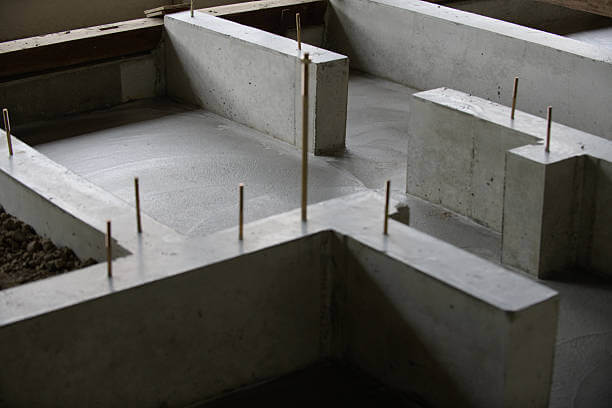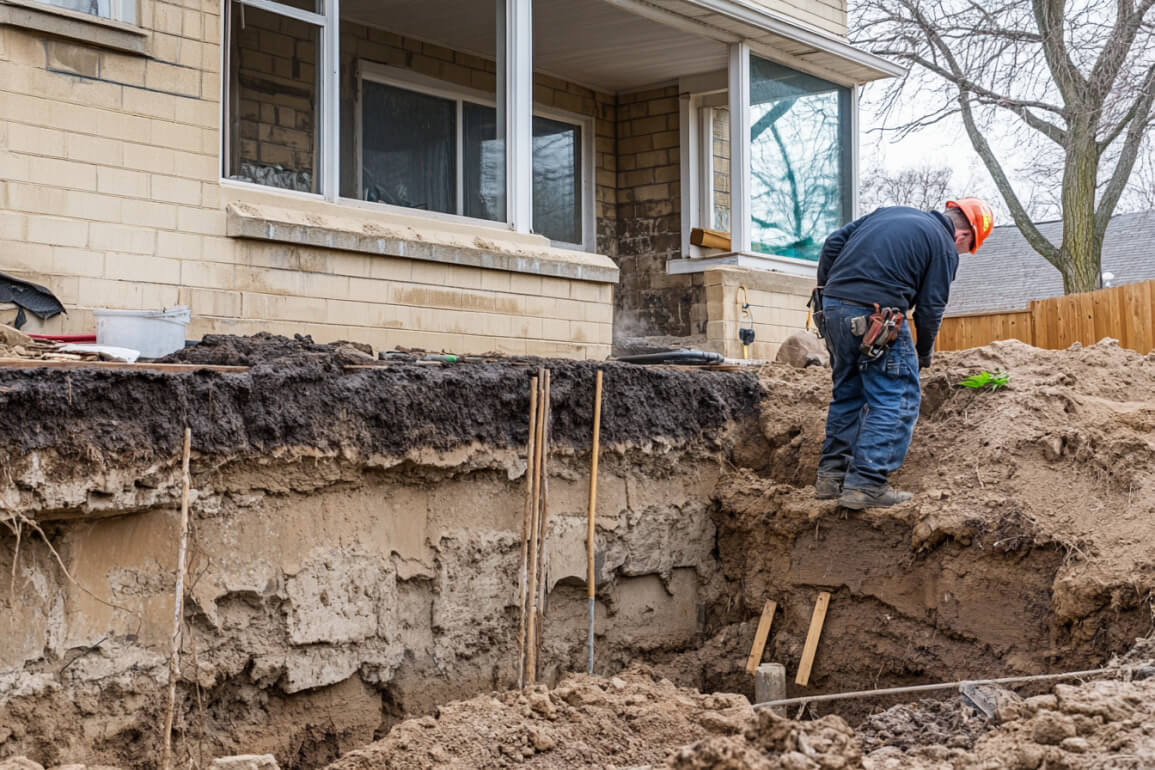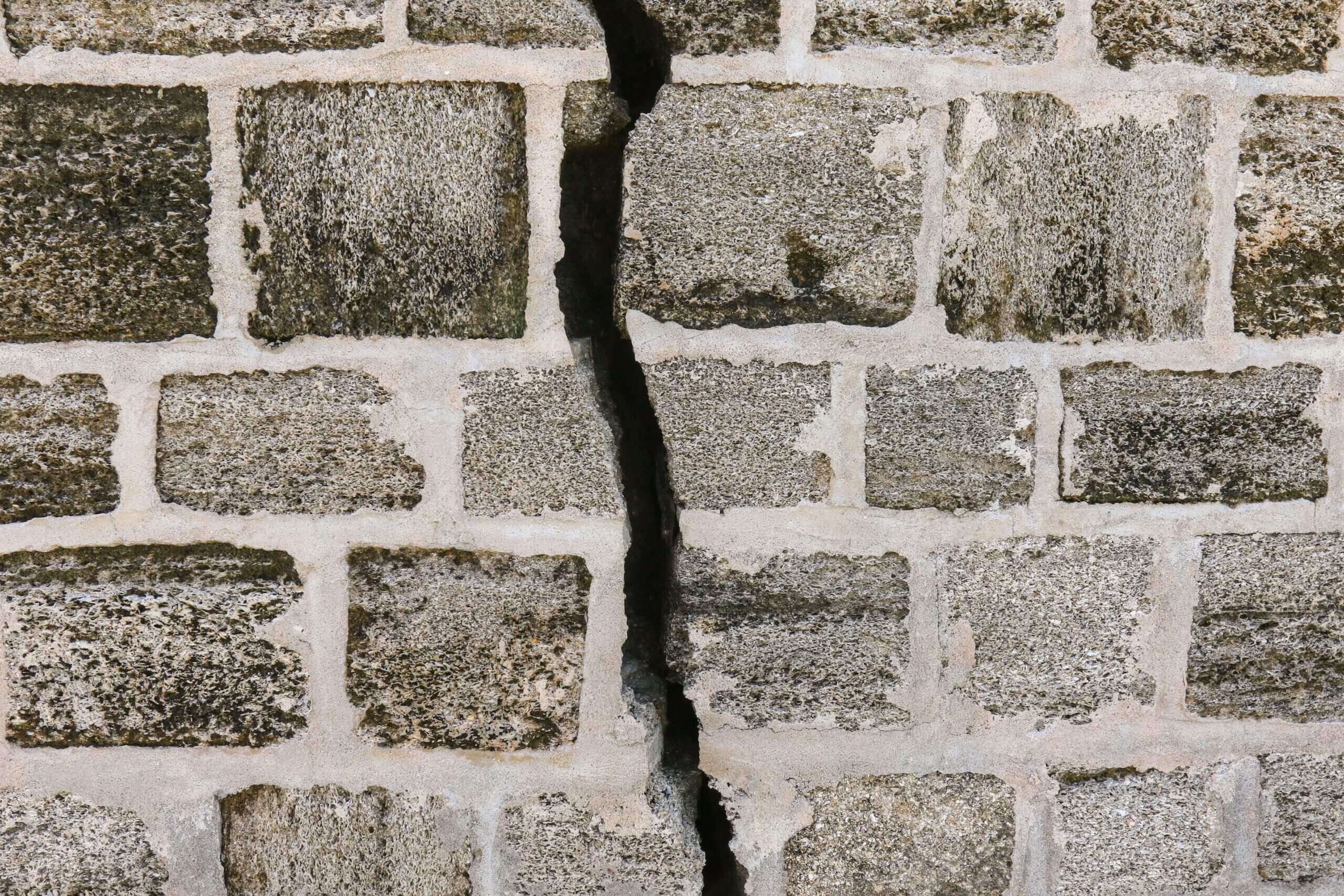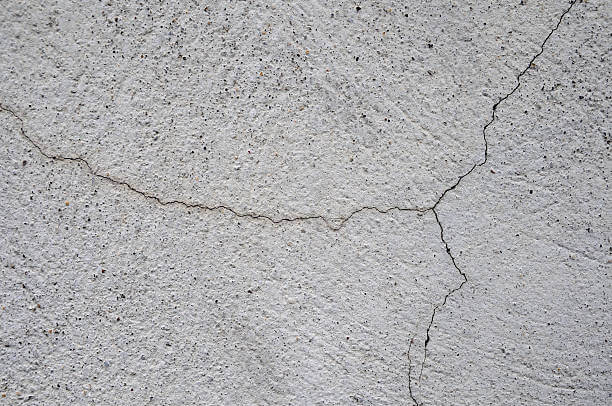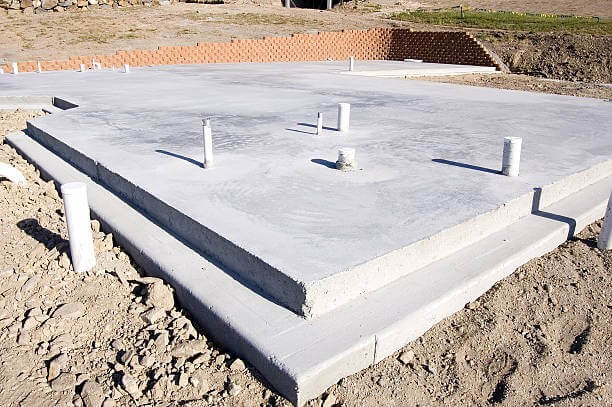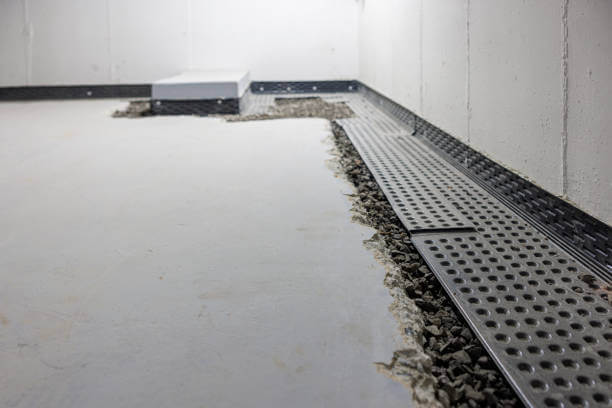Foundation Repair Methods: A Complete Guide
Foundation problems don’t have a one-size-fits-all solution. The right repair method depends on your soil, the type of damage, and the structural needs of your home. Some methods provide deep, permanent stabilization, while others offer quick fixes for surface-level issues.
This guide breaks down the most common foundation repair methods, from steel piers to carbon fiber reinforcement, so you’ll know what each option involves, when it’s used, and what to expect.
➤ Note: If you’re looking for detailed cost info, check out our comprehensive foundation repair cost guide.
1. Steel Piers
Steel piers are long, galvanized pipes driven deep into stable soil to lift and stabilize sinking foundations.
Best For:
- Severe settling or sinking
- Expansive clay soils
- Older homes with deep foundations
Process:
- First, specialists assess the foundation with elevation readings.
- Next, contractors drive steel piers into stable soil using hydraulic equipment.
- Then, hydraulic jacks lift the foundation before locking piers in place.
- Lastly, soil is backfilled, and cosmetic repairs are made.
Cost: About $3,000 per pier
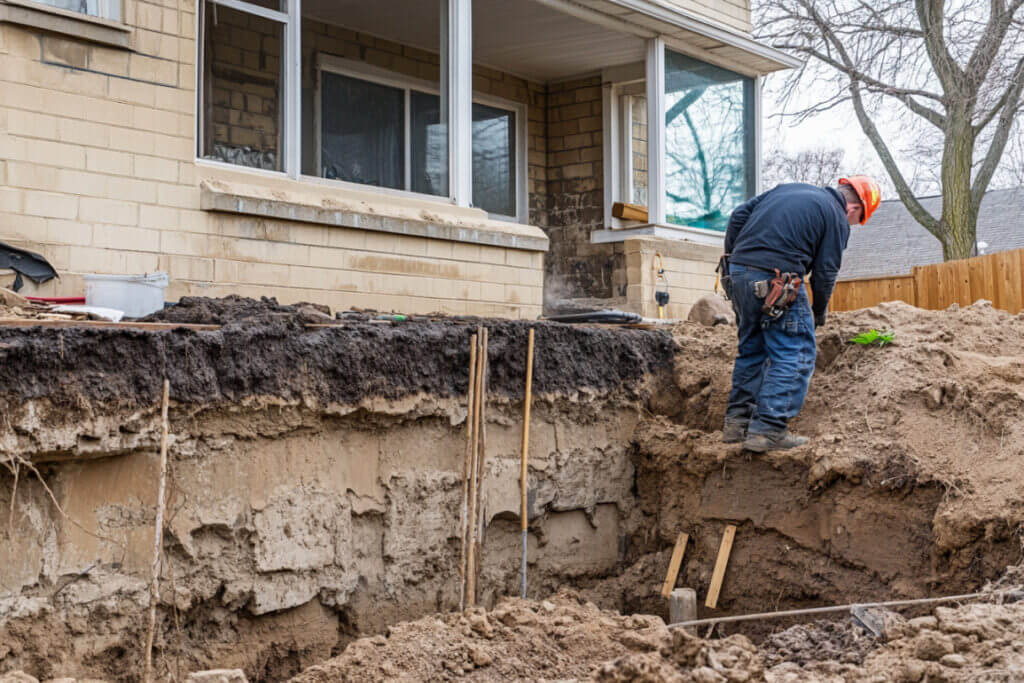
2. Helical Piers
Helical piers are steel shafts with screw-like plates that twist into the soil, offering strong support with minimal excavation.
Best For:
- Lightweight structures (porches, decks, small additions)
- Homes with high water tables
- Projects needing minimal disruption
Process:
- To begin, soil is exposed around the foundation.
- Then, hydraulic machinery twists helical piers deep into stable soil.
- After that, contractors attach brackets to the foundation footing.
- Finally, engineers test load capacity and adjust as needed.
Cost: About $3,000 per pier
3. Concrete Piers
Concrete piers are large columns poured into drilled holes beneath the foundation. They provide strong, permanent support once cured.
Best For:
- Moderate settling
- Stable soil conditions
- New construction (preventative installation)
Process:
- To start, contractors drill holes down to a stable layer.
- If needed, rebar may be added for reinforcement.
- After that, concrete is poured and left to cure.
- Once hardened, piers provide deep foundation support.
Cost: $1,000 to $3,000 per pier
4. Slab Jacking (Mudjacking)
Slab jacking lifts a sunken concrete slab by injecting a cement-based slurry underneath.
Best For:
- Driveways, sidewalks, patios, and garage floors
- Non-structural slab settlement
- Affordable, fast fixes
Process:
- Contractors start by drilling small holes in the slab.
- Next, a slurry mixture gets pumped underneath.
- As this is happening, the slab rises back to level.
- Once the slab is level, contractors patch and seal holes.
Cost: $600 to $1,600
5. Polyurethane Foam Injection
Polyurethane foam injection lifts slabs using lightweight, expanding foam instead of a cement slurry.
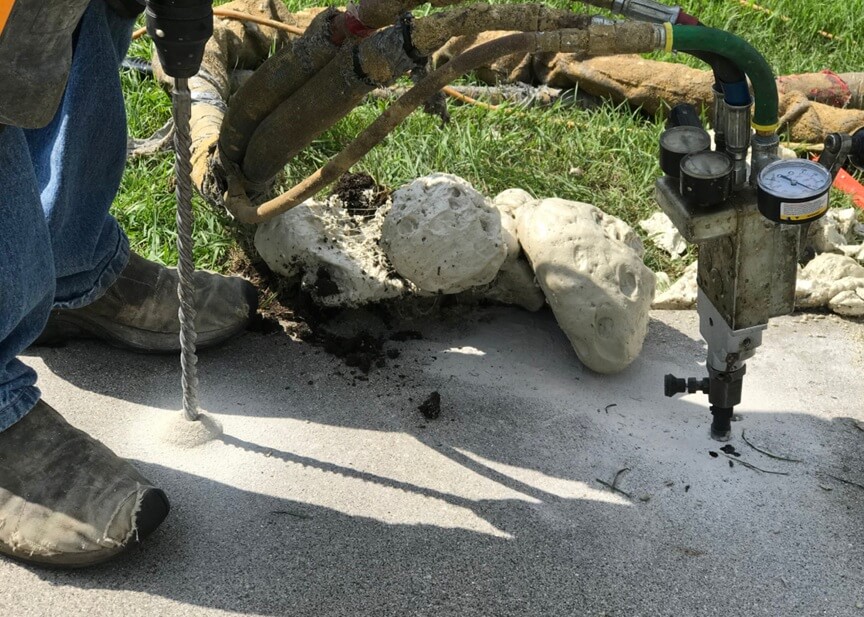
Best For:
- Interior foundation slabs
- Areas with limited access
- Homeowners wanting a fast-drying, less invasive solution
Process:
- First, small holes are drilled into the slab.
- Then, high-density foam is injected and expands under the slab.
- Lastly, the slab rises into position, and holes are sealed.
Cost: About $2,500
6. Masonry Patches and Sealants
Masonry patches and sealants use epoxy, hydraulic cement, or other sealants to repair small foundation cracks and stop water intrusion.
Best For:
- Minor, surface-level cracks
- Preventing basement leaks
- Temporary fixes before larger repairs
Process:
- To start with, cracks are cleaned of dust and debris.
- Then, epoxy or hydraulic cement is applied.
- In time, the material cures to form a watertight seal.
Cost: Around $500
7. Carbon Fiber Straps
Carbon fiber straps strengthen bowed or cracked basement walls caused by soil pressure.
Best For:
- Horizontal cracks in basement walls
- Bowing or bulging from soil or water pressure
- Preventative reinforcement before major movement
Process:
- Contractors clean and prep the basement walls.
- Once clean, epoxy adhesive is applied.
- After that, carbon fiber straps are pressed into place.
Cost: $350 to $1,000 per strap
Why Foundation Problems Happen
Understanding why foundation problems occur can help you take steps to prevent future issues. Several factors can compromise a foundation, such as:
- Soil Movement. Clay soil swells when wet and shrinks when dry, putting pressure on the foundation. As a result, poor soil compaction during construction can leave gaps that cause settling.
- Water and Drainage Issues. Poor grading, clogged gutters, or bad drainage can cause water to pool around the foundation. Over time, this weakens the soil and increases hydrostatic pressure.
- Plumbing Leaks. Hidden leaks under a slab or in underground pipes can saturate soil, making it soften and shift.
- Vegetation and Tree Roots. Large trees near a home draw moisture from the soil, making it shrink. Additionally, roots may damage the foundation.
- Frost Heave. In colder climates, freeze-thaw cycles expand the soil, lifting and damaging foundations.
- Construction Defects. Poor design, weak materials, or ignoring soil conditions during construction can lead to instability.
By identifying these common causes, homeowners can better understand the importance of maintenance, drainage management, and professional inspections to protect their home’s foundation.
Choosing the Right Foundation Repair Method
The best foundation repair method depends on the type and severity of the damage, soil conditions, and the long-term stability required. To help you determine which method is right for your situation, here’s a quick guide:
For Minor Cracks and Surface Damage
- Best Option: Masonry patches and sealants
- Why? This is a cost-effective solution for hairline cracks that do not indicate serious structural problems.
For Settling Foundations
- Best Options: Steel piers, helical piers, or concrete piers
- Why? These methods provide deep support by reaching stable soil and lifting the foundation.
For Uneven or Sunken Concrete Slabs
- Best Options: Slab jacking (mudjacking) or polyurethane foam injection
- Why? These techniques lift and level concrete slabs that have shifted due to soil erosion or voids beneath the structure.
For Bowing Basement Walls or Structural Weakness
- Best Options: Carbon fiber straps or steel piers
- Why? Carbon fiber straps reinforce walls against lateral pressure, while piers provide additional foundational support.
For Moisture-Related Issues and Expansive Soil Conditions
- Best Options: Helical piers combined with proper drainage solutions
- Why? Helical piers support shifting soil, and proper drainage prevents future damage.
➤ Acting now can help prevent costly repairs. See our guide on the early warning signs of foundation issues.
Hiring a Professional for Foundation Repair
While small sealing projects can be DIY, most foundation repairs require professional expertise. Unlike most homeowners, experienced foundation repair specialists can diagnose the problem, recommend the best repair, and ensure safe, effective work.
When choosing a foundation repair contractor, homeowners should consider:
- Experience and Reputation. Look for licensed contractors with proven track records in foundation repair.
- Warranties and Guarantees. Reliable companies back their repair work with warranties for long-term peace of mind.
- Inspection and Cost Estimate. Contractors should provide a full evaluation and clear breakdown of costs and repair methods before starting work. See our guide on foundation inspection costs so you know what to expect.
Compare top-rated foundations pros in your area.
Read real homeowner reviews, explore qualifications, and view promotions. Modernize makes it easy to browse professionals and find one that will be perfect for your project.




